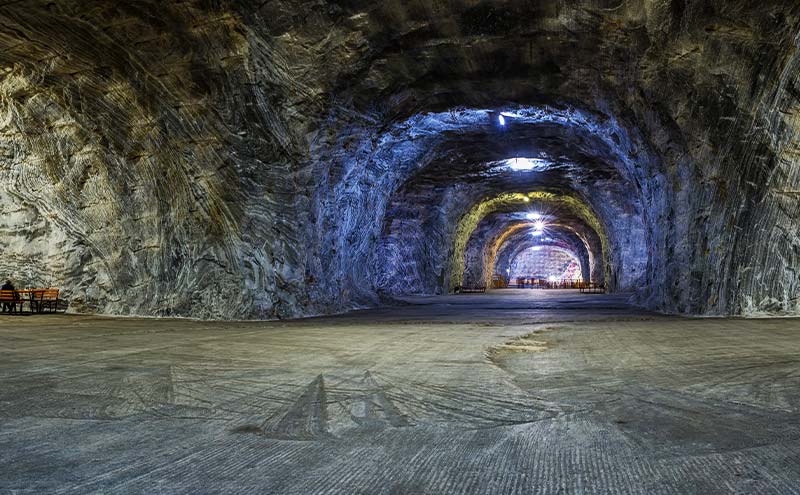The Department of Minerals and Resources in South Africa may well have just been provided with a perfect opportunity to implement change to safety regulations in underground mining, in light of the recent near miss at Harmony Gold’s Kusasalethu mine. Located near Carletonville in South Africa, the incident resulted in 486 miners being trapped underground by a fire. This incident thankfully had a happy ending with all miners being safely rescued.
South Africa now has a golden opportunity to take the recent Harmony incident as a quiet reminder that more needs to be done with regards to regulations placed on underground mining emergency response planning. In recent years, many countries have gone through the process of implementing positive changes to how mines prepare for an emergency and what kinds of safety processes and equipment are considered a minimum requirement for mines to meet government safety guidelines and regulations. Most of those guidelines have been drawn up retrospectively to mining disasters which exposed the local mining industry to public attention due to the gaping holes in safety policy.
South Africa has some of the deepest and most highly populated underground mines in the world. The recent incident at Harmony Gold occurred more than two kilometres below the surface. On this particular occasion, Harmony and their miners were very fortunate that Safety Response crews were able to gain access to the site as quickly as they did. Best practice from around the world recommends that mine refuge bays and chambers should be equipped for maintaining occupants for long periods of time in complete isolation, in the chance of rock-fall, fire or other prolonged incidents.
Refuge chambers and rooms can save lives in the immediate event of a mine collapse, rockfall or explosion. However in the medium to long term, if the chambers are not fully equipped with the correct safety equipment they can be as dangerous as not having a refuge chamber at all.
Best practice in the provision of safe havens and mine refuges state that in order for the refuge to perform its function comprehensively, it must be equipped with mine air and the appropriate filtration to utilise this as a primary source of breathable air. It also states that a backup supply of compressed medical grade oxygen is required, as well as a third and final source of oxygen in case of depletion or failure of the first two sources (this can be in the guise of military approved oxygen candles whose chemical reaction when ignited produces oxygen).
Enriching the air with oxygen, however, is not enough on its own. Oxygen does not deplete the toxic levels of CO/CO2 in the ambient environment. Aside from the three-stage oxygen supply, a chamber requires a way of cleaning the air of these toxic gases. Refuges should be required to provide a method of cleaning or “scrubbing” CO and CO2 from the internal environment as even very minor increases in the levels of these harmful compounds in the air can result in sickness, loss of consciousness and eventually death.
Another feature that cannot be overlooked is the requirement to control the chamber’s temperature. On top of the overall mine temperature, the ambient temperature inside a refuge can increase dramatically purely based on heat generated by occupants and the life-sustaining machinery. In order to avoid a negative impact on the health of the occupants, it is imperative to control the interior climate of the chambers using a cooling system, with the temperature set within a safety range that does not overly tax the power source (battery power when main power has been disconnected).
Finally, safe havens and chambers should be required to operate autonomously for long periods of time in the event of complete isolation from the surface. Should power be lost, it is essential that the chambers have a backup power supply such as a UPS contingency (Uninterruptable Power Supply). Without this feature, air scrubbing, air cooling systems and other necessary life support systems will fail.
Having all these systems in place is the only sure way to know you are providing miners with the best chance of survival during an underground mining incident. The best way to reach this point is through governmental regulation, and the best time to implement these types of changes is un-arguably before a major incident, rather than as a response to a disaster.
Regulations specifically addressing minimum requirements for mining refuges are already in place in many leading mining nations such as Australia, Canada, Chile, China, Mexico, Peru, and the USA. Other high-risk industries have also put in place guidelines for the use of refuge chambers and safe havens such as the British Standard (BS) and International Tunnelling Association (ITA) Guidelines for Tunnelling as well as for the petrochemical industry; the American Society of Civil Engineers (ASCE) 2009 Guideline: Design of Blast Resistant Buildings in Petrochemical Facilities.
At a post-rescue briefing with Harmony Gold, Mineral Resources Minister Adv Ngoako Ramatlhodi commented that a full DMR investigation into the accident will take place and that the results will be used to inform measures to be taken to prevent a recurrence of these kinds of incidents. One can only hope this investigation will be the catalyst for change and formal legislation will be developed around the use of refuge and safe havens in the event of mining emergencies in the future.






